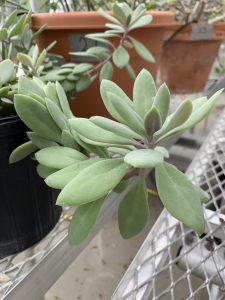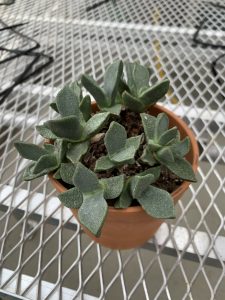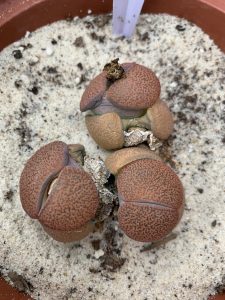 Desert environments are extremely dry and hot, and the desert soil often absorbs high levels of solar radiation. Because of this, the atmosphere over the desert rarely makes clouds or produces rain (Solbrig and Orians 1977). Why, then, are so many different types of plants able to live in the dryness of the desert?
Desert environments are extremely dry and hot, and the desert soil often absorbs high levels of solar radiation. Because of this, the atmosphere over the desert rarely makes clouds or produces rain (Solbrig and Orians 1977). Why, then, are so many different types of plants able to live in the dryness of the desert?
Our gardens at home are often filled with temperate flowers and vegetables that need lots of water during Ohio summers. Many plants even ask to be watered every day, but some cacti and other desert plants can go up to years without new sources of water (North and Nobel 1998). This is because desert plants have adaptations that our temperate flowers do not, such as specialized roots to combat water stress.

Since roots are often found below the ground’s surface, we normally do not think about how vital this part of the plant is. Roots come in many different shapes and sizes, but they often serve three main functions–to produce hormones, anchor the plant, and absorb minerals and water (Mauseth 2016). Through roots, plants are able to obtain water and transport it to the rest of the plant, but this can be a challenge in desert environments where the soil is most often extremely dry.
One adaptation desert plants can have is in the depth of their roots. Some desert plants, like many succulents, have very shallow root systems under ground. By keeping their roots close to the surface, these plants are able to quickly take up water when there is even a small amount of rainfall. These plants cannot  take up as much water as deep rooted plants, who have roots that extend deep into the soil. These deep rooted plants are slower at taking up water, but they can take up more water at a time to transport to the rest of the plant (Graham and Nobel 1999).
take up as much water as deep rooted plants, who have roots that extend deep into the soil. These deep rooted plants are slower at taking up water, but they can take up more water at a time to transport to the rest of the plant (Graham and Nobel 1999).
Although it may seem crazy that desert plants are able to survive in such harsh conditions, it helps to know that desert plants have many different adaptations than the plants we see in Ohio. Our native plants may not be able to survive in the desert, but desert plants would not fair well here either. It is important to remember that plants are suited for their own specific environments, and it is there that they are able to survive and thrive.



Bibliography
Graham, Eric A. and Park S. Nobel. 1999. “Root Water Uptake, Leaf Water Storage and Gas Exchange of a Desert Succulent: Implications for Root System Redundancy.” Annals of Botany 84(2):213–23.
Mauseth, James D. 2016. Botany: An Introduction to Plant Biology. 6 edition. Burlington, MA: Jones & Bartlett Learning.
North, G. B. and P. S. Nobel. 1998. “Water Uptake and Structural Plasticity along Roots of a Desert Succulent during Prolonged Drought.” Plant, Cell & Environment 21(7):705–13.
Solbrig, Otto T. and Gordon H. Orians. 1977. “The Adaptive Characteristics of Desert Plants: A Cost/Benefit Analysis of Photosynthesis Leads to Predictions about the Types and Distributions of Desert Plants.” American Scientist 65(4):412–21.
ARH made this webpage to increase plant appreciation as part of Wooster’s Field Botany course in Spring 2020